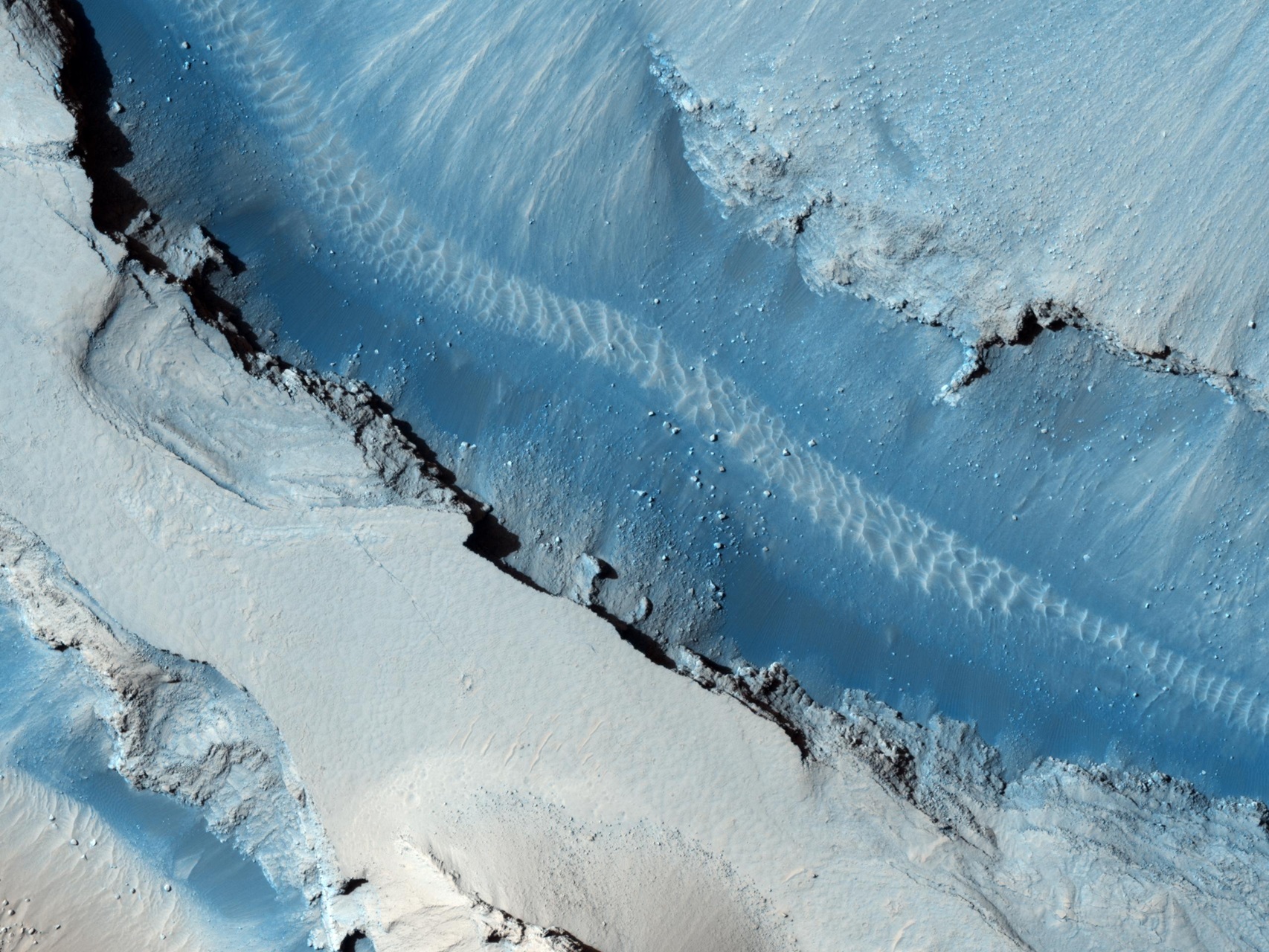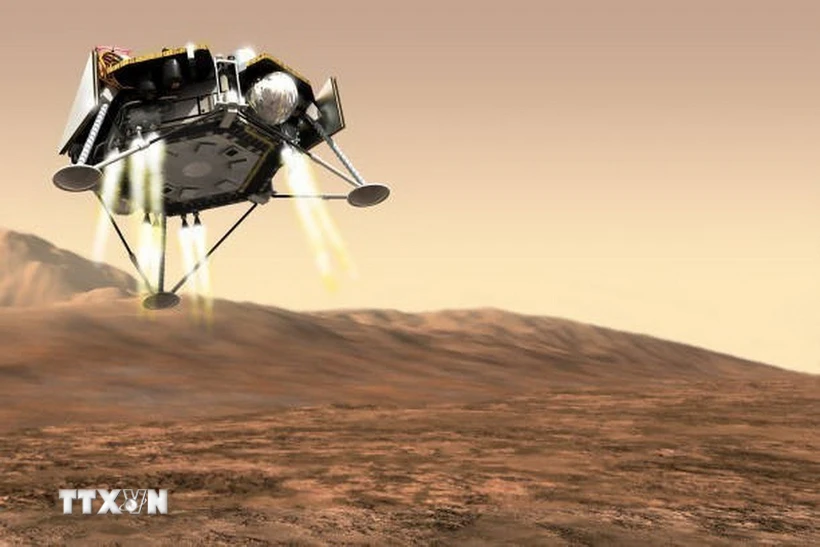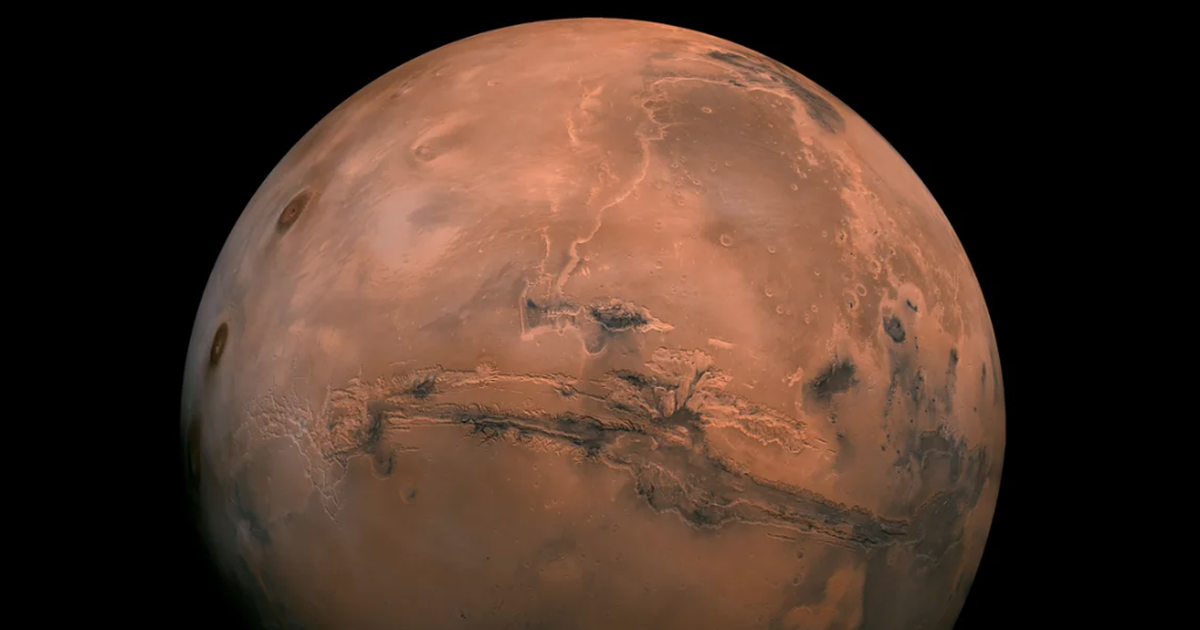(NLDO) - The data that NASA's InSight spacecraft collected from the neighboring planet may have caused some major mistakes.
In an effort to learn about Mars - a planet that is being carefully "cared for" by many NASA spacecraft - scientists have identified 123 new impact craters that were formed between December 2018 and December 2022.
49 of them may have led scientists astray when analyzing data from the InSight lander.

The magical landscape of the Cerberus Fossae area - Photo: NASA
NASA's InSight lander is a stationary craft used to measure seismic activity on the red planet. After its last communication on December 25, 2022, InSight "died" due to Martian dust burying its solar panels.
Yet in more than two years of operation, InSight has detected more than 1,300 earthquakes on our neighboring planet.
These data have provided the foundation for many groundbreaking studies of Mars, including understanding the planet's internal structure, as well as a better understanding of how all rocky worlds, including Earth and the Moon, formed.
But two studies recently published in the scientific journal Geophysical Research Letters , led by NASA, show that the interior of the red planet still contains unexplained things.
Most prominent is data from a 21.5-meter-diameter impact crater in Cerberus Fossae, a particularly quake-prone region on Mars, 1,640 kilometers from InSight.
The crater is much farther away than InSight expected based on the seismic energy of the quake.
Mars’ crust has unique properties that are thought to dampen seismic waves generated by impacts. New analysis of the Cerberus Fossae impact suggests the waves it generated took a more direct path through the planet’s mantle.
Dr Constantinos Charalambous from Imperial College London (UK), a member of NASA's InSight team, said they had thought that the energy detected from most seismic events was trapped in the Martian crust.
But new analysis of the impact crater at Cerberus Fossae reveals a deeper, faster path they call a “seismic highway” through the mantle, allowing seismic waves to travel farther across the planet.
Researchers also searched for impact craters within a radius of about 3,000 kilometers from InSight's location, hoping to find some that formed during the rover's operations.
By comparing images from the Context Camera on NASA's Mars Reconnaissance Orbiter (MRO), they found 123 new craters, 49 of which likely matched quakes detected by the lander's seismometer.
"We thought Cerberus Fossae produced a lot of high-frequency seismic signals associated with internal earthquakes, but this suggests that some of the activity is not originating there and may actually be coming from impacts," said Dr Charalambous.
While this has forced scientists to revise some models regarding the internal structure of Mars, it has also opened new doors in the study of the geology of rocky planets.
Source: https://nld.com.vn/va-cham-vu-tru-khien-nasa-lac-loi-o-hanh-tinh-khac-196250206104058717.htm


![[Photo] Prime Minister Pham Minh Chinh and Ethiopian Prime Minister visit Tran Quoc Pagoda](https://vstatic.vietnam.vn/vietnam/resource/IMAGE/2025/4/17/18ba6e1e73f94a618f5b5e9c1bd364a8)
![[Photo] President Luong Cuong receives Lao Prime Minister Sonexay Siphandone](https://vstatic.vietnam.vn/vietnam/resource/IMAGE/2025/4/17/337e313bae4b4961890fdf834d3fcdd5)
![[Photo] President Luong Cuong receives Kenyan Defense Minister Soipan Tuya](https://vstatic.vietnam.vn/vietnam/resource/IMAGE/2025/4/17/0e7a5185e8144d73af91e67e03567f41)
![[Photo] President Luong Cuong receives UN Deputy Secretary General Amina J.Mohammed](https://vstatic.vietnam.vn/vietnam/resource/IMAGE/2025/4/17/72781800ee294eeb8df59db53e80159f)
![[Photo] Hundred-year-old pine trees – an attractive destination for tourists in Gia Lai](https://vstatic.vietnam.vn/vietnam/resource/IMAGE/2025/4/17/25a0b7b629294f3f89350e263863d6a3)
![[Photo] Warm meeting between the two First Ladies of the Prime Ministers of Vietnam and Ethiopia with visually impaired students of Nguyen Dinh Chieu School](https://vstatic.vietnam.vn/vietnam/resource/IMAGE/2025/4/17/b1a43ba73eb94fea89034e458154f7ae)









![[Video] For the first time, businesses are not limited in spending from the Science and Technology Fund](https://vstatic.vietnam.vn/vietnam/resource/IMAGE/2025/4/17/c4916ce9668149c1ad4cfa0f81a084ec)



![[Video] Promoting innovative startups in green transformation](https://vstatic.vietnam.vn/vietnam/resource/IMAGE/2025/4/17/76505a79acdb42d085371257649bbdb6)







































![[Video] Viettel officially puts into operation the largest submarine optical cable line in Vietnam](https://vstatic.vietnam.vn/vietnam/resource/IMAGE/2025/4/17/f19008c6010c4a538cc422cb791ca0a1)





































Comment (0)